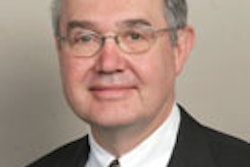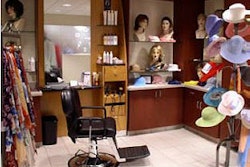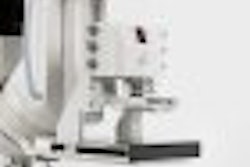In 2002, Dr. Edward Sickles and colleagues evaluated performance parameters for breast imaging specialists and general diagnostic radiologists in an academic practice. It wasn't a huge surprise that, according to the results, specialists detected more cancers and also had lower recall rates than general practitioners (Radiology, September 2002, Vol. 224:3, pp. 861-869).
But does that same pattern hold true in a community practice setting? Not necessarily, according to another group of researchers based at the University of California, San Francisco.
"We undertook our study to determine whether a significant performance difference … would be found in a setting more reflective of breast imaging practice in the United States," wrote Dr. Jessica Leung's group. "This study was a retrospective analysis of data prospectively collected during a five-year period at a community hospital in San Francisco.... This period was selected to coincide with the period during which data has been collected for (the Sickles study)" (American Journal of Roentgenology, January 2007, Vol. 188:1, pp. 236-241).
For the current study, the data consisted of 106,405 screening mammograms and 52,149 diagnostic exams. Computer-aided detection (CAD) and/or second review were not used.
The readers consisted of nine radiologists, all of whom performed mammography and breast ultrasound. Of the nine, three were considered specialists who spent three times more of their work hours interpreting breast imaging studies. Out of the 158,544 studies, these three read 57% of the screening mammograms and 84.2% of the diagnostic mammograms. The other six readers were labeled as generalists.
According to the results, the specialists did detect more cancers than the generalists, but the differences ended there, the authors stated. For the specialists, the cancer detection rate at screening was 2.5 per 1,000 cases versus 2 per 1,000 for the generalists. In the diagnostic setting, the specialists did better with a detection rate of 20 cancers per 1,000 cases in comparison to 16 per 1,000 for the general readers.
Other statistics were very close. The recall rate was 6.5% for specialists and 6.7% for generalists. The biopsy recommendation rate after screening was 1.1% for specialists and 1.2% for generalists. The rates after a diagnostic exam were 8.4% for specialists and 8.5% for generalists.
Obviously, the specialists devoted a greater amount of time to mammography and acquired more continuing medical education hours in breast imaging. Another factor that gave them the edge was the performance of image-guided core biopsies, an experience that provided these radiologists with the chance to correlate imaging findings with pathology, the authors explained.
But looking at the big picture, "overall, both groups identified more early-stage, favorable-prognosis cancers in the screening population than in the diagnostic population," Leung's group wrote. "We believe that general radiologists in a community practice with sufficient training, experience, and quality improvement programs should achieve results comparable with those we report."
By Shalmali Pal
AuntMinnie.com staff writer
January 11, 2007
Related Reading
Second opinions prompt changes in breast cancer management, December 15, 2006
Does gender, experience influence reader FP rates in mammography screening?, December 15, 2006
Multiple-reading protocol bolsters interpretation for non-mammographers, September 6, 2002
Copyright © 2007 AuntMinnie.com



















